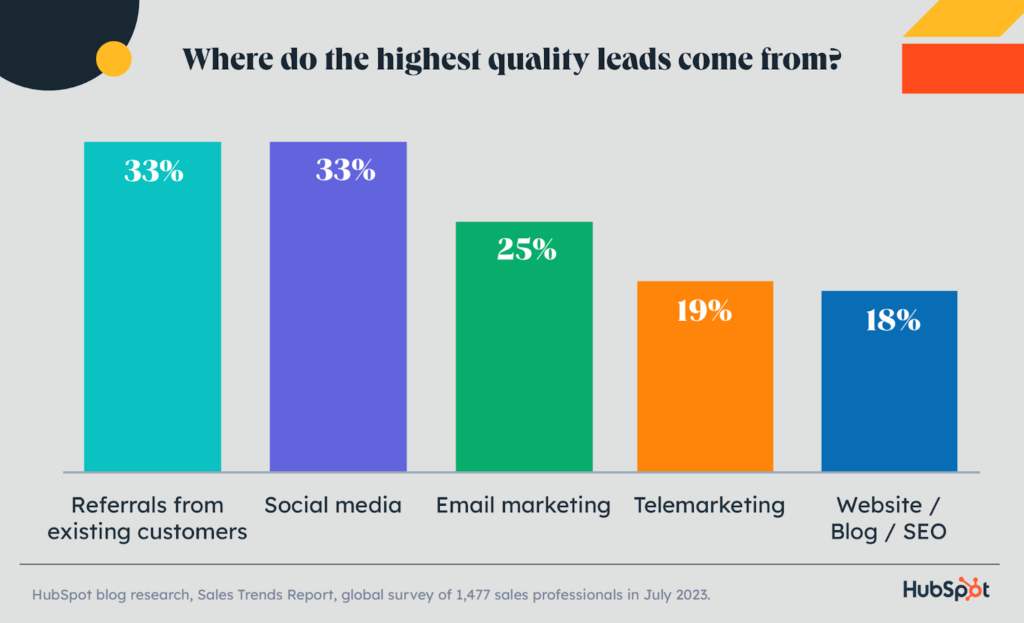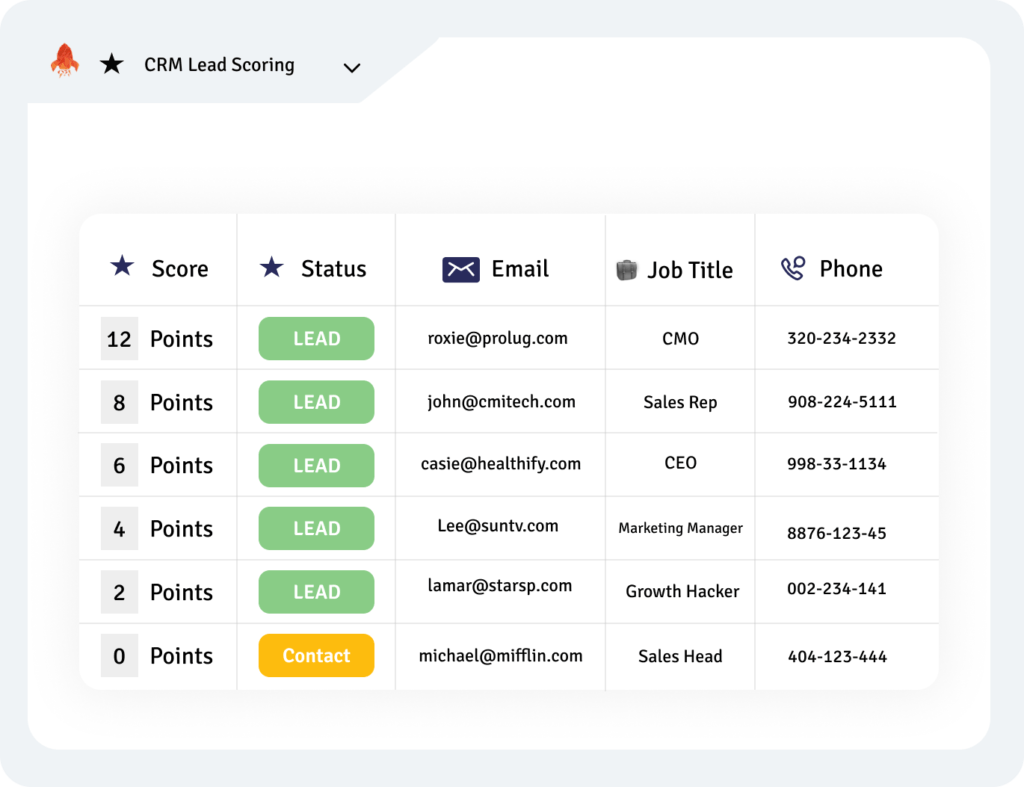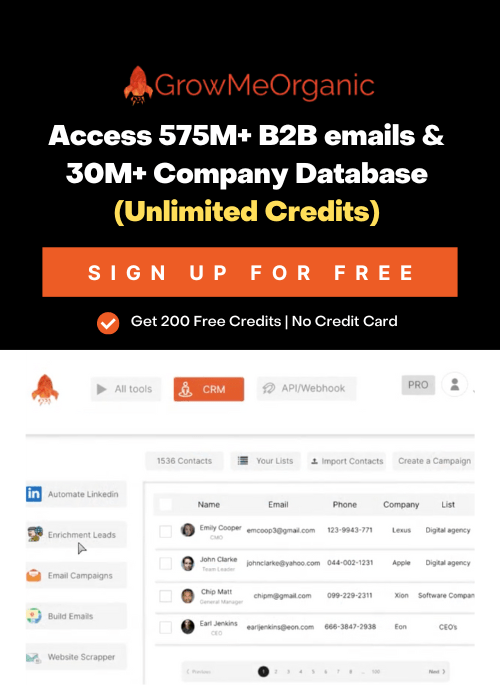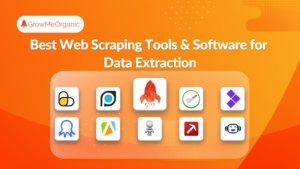B2B prospecting is the most important step of any B2B sales process. During this step, sales representatives qualify new leads and start conversations. It builds relationships with the leads and converts them into customers.
Prospecting may sound simple, but according to a Salesmate survey, 40% of salespeople call it the most difficult task. It requires a lot of effort.
Moreover, it can be a challenging process for companies, as they often face quality and quantity issues. However, there are ways to enhance your efforts.
You can get over these issues and get good results by using the right techniques and a creative approach. Let’s take a look at the B2B prospecting techniques to make this process effective.
10 Effective Techniques for B2B Prospecting You Must Know
Find Verified Data
B2B prospecting is more than determining your ideal customer profile, you will still need verified leads to convert them into customers. Find a way to collect those leads from different sources, such as LinkedIn.
Verified leads guarantee reliability and accuracy, lowering the chances of targeting wrong leads. You need this accuracy to build credible prospect lists. Hence, you should go with reliable partners.
Use tools, such as email finder from GrowMeOrganic, to export unlimited contacts of your potential B2B customers. With their Chrome extension, you will find verified email addresses and phone numbers within minutes.
Send Personalized Emails
Emails don’t have to be generic. Be creative and personalize them. According to the Rain group, 8 out of 10 buyers prefer personalized emails from sales representatives. It takes a lot of research to create personalized emails.
Some things to follow are:
- Including the full name of your prospect
- Making personal appeal in the email body
- Articulating what’s in for them
- Not writing in overly promoting language
- Tailoring emails as per business needs or specification
- Adding a simple CTA, whether to click for a demo or initiate a future conversation
After all, no one wants to feel like just another name on the list. Personalize your outreach, and you can win the battle.
Ask for Referrals
As per a survey from Hubspot, 66% of sales representatives said referrals are the best and highest-quality leads.

Referrals are a great way to find new business opportunities in the B2B market. Prospects tend to trust other prospects more than sales representatives.
If you want to grow your business, don’t be shy about asking your satisfied customers for referrals. If you’ve done a great job, they’ll happily recommend you to others.
Chatbots for Instant Interaction
Chatbots can be used to engage potential leads, which can increase productivity. Companies can also qualify their leads quickly by asking relevant questions using these chatbots. Such experiences will make your prospects happy and show your commitment to excellent customer service.
As per Statista, Chatbots generated $137.6 million in income in 2023. Enabling chatbots to offer valuable insights into products and services can increase your B2B prospecting chances.
Once qualified, sales and marketing teams can initiate the conversation from where chatbots left off. This integration enhances and facilitates personalized engagements resulting in potential customers.
Companies can engage in Custom Chatbot Development to create intelligent chatbots that reduce the workload of their sales and customer support teams. These chatbots can immediately respond to common queries, assist customers with tracking, and provide real-time updates.
Similarly, they can schedule appointments for demos and streamline the sales process and pipeline. According to previous conversations, they can also assist in up-selling and cross-selling.
Multichannel Outreach Strategy
Use a multichannel outreach strategy to reach your target audience efficiently. You can use various channels, such as social media, emails, phone calls, etc.
Create excellent content like case studies, whitepapers, and blog posts. Distribute this material through various platforms to build authority and attract new customers.
Through this distribution, you can increase your visibility on these platforms. Additionally, marketing automation technologies can assist in tracking your prospects and personalizing your interactions.
Customer Relationship Management (CRM) Optimization
CRM optimization guarantees excellent sales conversions, relationship-building, and efficient lead management. Your team can save time by automating tasks like making phone appointments and sending emails.

A CRM software helps you target and segment your prospects according to their profiles, needs, and behavior. You can effectively monitor the results and provide customized messages and offers.
Ensure that your prospect data is current and accurate to get the most out of your CRM. Create a lead score module to rank your leads according to their prospective value and level of involvement.
Allocate points to every determined criterion, considering its importance to your sales process. Set scoring cutoff points that tell when a lead advances to the next phase.
This will help your team to focus on high-value customers and make your sales and marketing efforts more efficient.
Cross-Selling and Upselling Campaigns
Did you know that according to a study, closing a deal with an existing client is 60%-70% more likely than with a new one, which is just 20%?
This is because you’ve already put in the effort to create loyal clients who trust your brand. You also have a better understanding of their requirements. To maximize this relationship, consider cross-selling and upselling.
In cross-selling, you present a brand-new, related product for their use, whereas in upselling, you sell the same product with upgraded features. For a campaign to be successful, adhere to these five components:
- Get to know and comprehend your client thoroughly.
- Understand your offering – product or service like the back of your hand.
- Don’t be pushy.
- Maintain a system to track data and progress.
- Be in touch with your customers, even if they don’t buy immediately.
Remember, patience is the key to making this strategy successful.
Competitor Analysis for Targeting Gaps
Understanding your competition is just as vital as understanding your consumers. Monitoring their blog and social media accounts might not be sufficient. To outshine them, you need to look more closely.
When analyzing a company’s performance, there are numerous questions you should focus on.
For instance,
- What new features have they introduced?
- Are their LinkedIn followers increasing?
- Who are their customers?
- What does it indicate if they post anything irrelevant to their product?
These are only a few questions that can help you evaluate the company’s progress.
Do in-depth competitor analysis by understanding their sales and marketing techniques and success strategy. Knowing their strengths and weaknesses will make it easier to identify market gaps and close them strategically. You can only stay ahead by paying attention to what your competitors are doing.
Dynamic Retargeting Campaigns
80% of the buying process is decided even before the first interaction. Your customers already know whether or not to make the purchase. That is why retargeting is essential.
Retargeting converts up to 50% of online visitors, increasing marketing return on investment. Using this strategy, you show yourself to prospective customers who are already interested in and aware of your brand. Capture their attention with a remarketing strategy at each stage to maximize the output.
Here are a few things to get started with:
- Creating remarketing lists
- Creating unique landing pages for enhanced user experience
- Designing creative B2B sales content
- Developing social media ads
Go for the Best B2B Prospecting Tool – GrowMeOrganic
An excellent option to save time and get verified B2B prospects is using an all-in-one prospecting tool, such as GrowMeOrganic. It is an advanced lead-generation tool that can help uncover new prospects and build strong relationships.
You can get verified and accurate data needed to build your sales pipeline. Create targeted campaigns, search and nurture leads, track results, and send automated messages for effective outreach. What sets it apart is its “unlimited credits” system and affordability!
Also, features such as contact segmentation, lead scoring, automated outreach programs, and more make it a perfect tool for any business. You can actually save more than $1000/Month on expensive prospecting.
GrowMeOrganic also offers a Chrome extension to extract emails from LinkedIn, making it easier to reach your prospects. Don’t wait any longer; Sign up for the free trial now.
Key Features of GrowMeOrganic:-
- Sales prospecting platform – GrowMeOrganic helps businesses find, identify, and qualify leads quickly and efficiently. Through its various features, such as lead scoring, automated outreach campaigns, and contact segmentation, it assists companies with converting leads into customers.
- Global B2B database – Companies can get unlimited access to over 15 million verified companies and 575 million verified professionals using this platform.
- Customized search – Companies can go for customized search options and find their potential customers in no time. For example, by using the company’s name, they can find all employees working there in seconds.
- Connect with decision-makers – Businesses can access a detailed list of employees conveniently at GrowMeOrganic. They can find decision-makers using this platform and initiate meaningful conversations for long-lasting partnerships.
How to Measure B2B Prospecting Performance?
- Leads generated – New generated leads are the most effective method of measuring your B2B prospecting performance. The quantity and quality of leads you produce directly reflect how well your lead generation strategies, tactics, and messaging work.
- Response time – Response time refers to how quickly your team contacts a lead after they show interest. It’s a vital measure for B2B prospecting that affects how the prospect perceives your professionalism, dependability, and value. In short, the faster the response time, the greater the chances of conversion.
- Lead qualification rate – It is the percentage of leads that meet the criteria of being a good fit for your business. Your lead qualifying rate reflects the lead quality and the level at which you could address their expectations and pain areas.
- Conversion rate – Conversion rate is the percentage of leads that become customers. It shows how well you are doing in sales. You can compare conversion rates over time to see if there are any changes or patterns.
- Monitor return on investment (ROI) – Calculate your ROI by deducting prospecting expenses from the revenue generated by those prospects. Positive ROI will indicate successful prospecting strategies.
- Customer Feedback and Satisfaction – Analyze the level of satisfaction among the leads that your prospecting efforts produced. Customers who are happy with your business will be more likely to use it again and to recommend it to others.
Conclusion
Stay committed to your growth, and keep these tips in mind as you continue your B2B prospecting journey. If you need more assistance with B2B prospecting, you can reach out to GrowMeOrganic for all your needs.
FAQs:
Q 1. What is a B2B prospecting tool?
A B2B prospecting tool is software used to research, locate, and qualify a potential customer. The sales representatives use this tool to initiate the first conversation and pitch their sales.
Q 2. Is there any difference between a lead and a prospect?
A lead is a potential customer who has expressed interest in your business but is not ready to purchase. Conversely, a prospect is a lead that meets your ideal customer profile and has the potential to become a customer.
Get Unlimited Access to B2B Contact Database
If you need unlimited access to over 15 million B2B contact databases, GrowMeOrganic is the perfect B2B enrichment tool. An all-in-one, affordable platform that regularly updates its database to ensure you reach the right prospect.
With its zero-tolerance policy against inaccurate or out-of-date data, you can find verified B2B contact details in bulk and export businesses from any industry.
Start your 14-Days FREE Trial now . No credit card is required.
About Post Author
Anant Gupta
Growth Hacker, Marketing Automation Enthusiast & Founder of GrowMeOrganic







